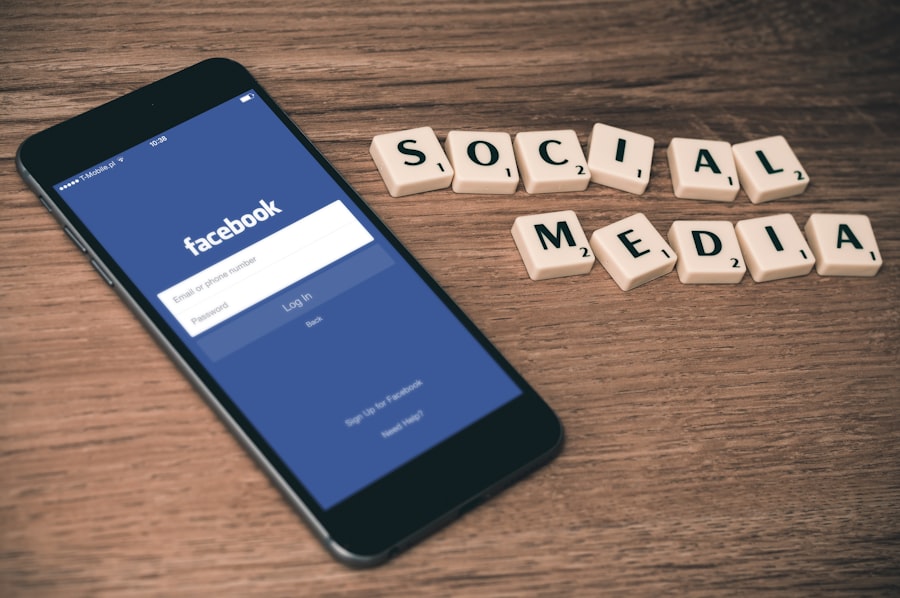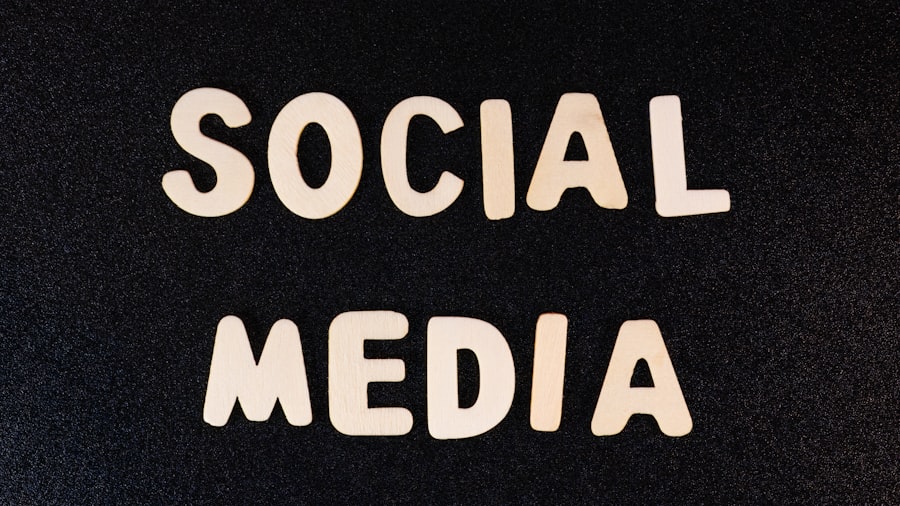In the contemporary landscape of healthcare, social media marketing has emerged as a pivotal tool for engaging with patients and the broader community. The proliferation of platforms such as Facebook, Twitter, Instagram, and LinkedIn has transformed how healthcare organizations communicate, educate, and build relationships with their audiences. Social media serves not only as a channel for disseminating information but also as a platform for fostering dialogue and interaction.
This two-way communication is essential in an industry where trust and transparency are paramount. By leveraging social media, healthcare providers can humanize their services, making them more relatable and accessible to patients who may feel intimidated by traditional healthcare settings. Moreover, the importance of social media marketing in healthcare extends beyond mere patient engagement.
It plays a crucial role in brand awareness and reputation management. In an era where online reviews and patient experiences can significantly influence public perception, healthcare organizations must actively manage their online presence. A well-executed social media strategy can enhance visibility, allowing providers to showcase their expertise, share success stories, and highlight community involvement.
This proactive approach not only attracts new patients but also fosters loyalty among existing ones, ultimately contributing to better health outcomes and patient satisfaction.
Key Takeaways
- Social media marketing is crucial for healthcare to educate and engage patients effectively.
- Defining target audiences and clear goals ensures focused and impactful campaigns.
- Diverse platforms and engaging content maximize reach and patient interaction.
- Patient testimonials and influencer partnerships build trust and credibility.
- Analytics and compliance with healthcare regulations are essential for success and ethical marketing.
Identifying Target Audience and Setting Clear Goals
A successful social media marketing strategy in healthcare begins with a thorough understanding of the target audience. Identifying who the patients are—considering factors such as age, demographics, health conditions, and preferences—is essential for tailoring content that resonates with them. For instance, a pediatric clinic may focus on engaging parents through informative posts about child health, while a geriatric care facility might target adult children seeking information for their aging parents.
By segmenting the audience based on these criteria, healthcare providers can create more personalized and relevant content that addresses specific needs and concerns. Setting clear goals is equally important in guiding social media efforts. These goals should be specific, measurable, achievable, relevant, and time-bound (SMART).
For example, a healthcare organization might aim to increase its follower count by 20% over six months or to boost engagement rates on educational posts by 30% within a quarter. Establishing such objectives not only provides direction but also allows for the evaluation of success over time. By aligning social media activities with broader organizational goals—such as improving patient education or enhancing community outreach—healthcare providers can ensure that their efforts contribute meaningfully to their mission.
Creating Engaging and Educational Content

Content is the cornerstone of any effective social media marketing strategy in healthcare. Engaging and educational content not only captures attention but also fosters trust and authority. Healthcare organizations should prioritize creating content that informs patients about health issues, treatment options, preventive measures, and wellness tips.
For instance, a hospital might produce a series of videos featuring doctors discussing common health concerns or debunking medical myths. Such content not only educates but also positions the organization as a reliable source of information. In addition to traditional formats like articles and videos, interactive content can significantly enhance engagement.
Quizzes, polls, and infographics can make complex medical information more digestible and appealing to a broader audience. For example, an infographic illustrating the benefits of vaccinations can effectively convey critical information while being visually engaging. Furthermore, storytelling can be a powerful tool; sharing patient success stories or testimonials can evoke emotional responses and encourage others to seek care.
By diversifying content types and focusing on quality, healthcare organizations can create a vibrant online presence that resonates with their audience.
Utilizing Different Social Media Platforms for Maximum Reach
| Social Media Platform | Monthly Active Users (Millions) | Best Content Type | Average Engagement Rate (%) | Optimal Posting Frequency (per day) | Primary Audience Demographic |
|---|---|---|---|---|---|
| 2900 | Mixed (Text, Image, Video) | 0.09 | 1-2 | 25-45 years | |
| 2000 | Images, Stories, Reels | 1.22 | 1-3 | 18-34 years | |
| 450 | Text, News, Threads | 0.045 | 3-5 | 18-49 years | |
| 900 | Professional Articles, Updates | 0.54 | 1 | 25-50 years | |
| TikTok | 1500 | Short Videos | 5.30 | 1-4 | 16-24 years |
| 450 | Images, Infographics | 0.20 | 3-5 | 25-45 years | |
| YouTube | 2300 | Long-form Video | 1.50 | 1 | 18-49 years |
Each social media platform offers unique features and demographics that can be leveraged to maximize reach in healthcare marketing. Facebook remains one of the most widely used platforms, making it ideal for community engagement and sharing detailed information through posts, events, and groups. Healthcare organizations can create dedicated pages to share updates, host live Q&A sessions with medical professionals, or promote health-related events in the community.
Instagram, with its visual-centric approach, is particularly effective for showcasing the human side of healthcare. High-quality images and videos can highlight staff members, patient stories, or behind-the-scenes glimpses of daily operations. Utilizing Instagram Stories or Reels can further enhance engagement by providing quick tips or answering frequently asked questions in an informal format.
On the other hand, LinkedIn serves as a professional networking platform where healthcare organizations can share industry insights, research findings, and thought leadership articles that establish credibility among peers. Twitter is another valuable platform for real-time communication and updates. It allows healthcare providers to engage in conversations around trending health topics or public health campaigns using relevant hashtags.
By participating in Twitter chats or discussions with other healthcare professionals, organizations can expand their reach and influence within the industry. Understanding the nuances of each platform enables healthcare marketers to tailor their strategies effectively, ensuring that they connect with their audience where they are most active.
Building Trust and Credibility with Patient Testimonials and Reviews
Trust is a critical component in the healthcare sector; patients are more likely to choose providers who have established credibility through positive experiences shared by others. Patient testimonials and reviews serve as powerful tools for building this trust online. Encouraging satisfied patients to share their experiences on social media or review platforms can significantly enhance an organization’s reputation.
For instance, a dental practice might feature video testimonials from patients discussing their successful treatments or positive interactions with staff. In addition to direct testimonials, responding to reviews—both positive and negative—demonstrates a commitment to patient satisfaction and transparency. Acknowledging feedback publicly shows prospective patients that the organization values input and is dedicated to continuous improvement.
For example, if a patient leaves a negative review about wait times, a healthcare provider can respond empathetically while outlining steps taken to address the issue. This level of engagement not only builds credibility but also fosters a sense of community among patients who feel heard and valued.
Leveraging Influencer and Partnership Collaborations

Collaborating with influencers in the healthcare space can amplify a provider’s reach and credibility significantly. Influencers—whether they are medical professionals with a strong online presence or health advocates—can help bridge the gap between healthcare organizations and potential patients by sharing authentic experiences and insights. For instance, a fitness influencer might partner with a local hospital to promote wellness programs or preventive health screenings through engaging content that resonates with their followers.
Partnerships with local businesses or community organizations can also enhance social media marketing efforts. By co-hosting events or campaigns focused on health education or awareness—such as free health screenings or wellness workshops—healthcare providers can tap into existing networks while reinforcing their commitment to community health. These collaborations not only expand reach but also foster goodwill within the community, positioning the organization as an integral part of local health initiatives.
Utilizing Analytics and Data to Measure Success and Make Informed Decisions
Data analytics plays a crucial role in refining social media marketing strategies within healthcare organizations. By tracking key performance indicators (KPIs) such as engagement rates, follower growth, click-through rates, and conversion metrics, marketers can gain valuable insights into what content resonates most with their audience. For example, if analytics reveal that video content consistently garners higher engagement than static posts, organizations can adjust their content strategy accordingly.
Moreover, understanding audience demographics through analytics allows for more targeted campaigns. If data indicates that a significant portion of followers are young parents interested in pediatric health topics, content can be tailored specifically to address their concerns—such as tips for managing childhood illnesses or promoting vaccination awareness. Regularly reviewing analytics not only helps in measuring success but also informs future strategies by identifying trends and areas for improvement.
Staying Compliant with Healthcare Regulations and Ethical Guidelines
Navigating the complexities of healthcare regulations is paramount when implementing social media marketing strategies. Organizations must adhere to guidelines set forth by entities such as the Health Insurance Portability and Accountability Act (HIPAA) in the United States, which protects patient privacy and confidentiality. This means that any content shared on social media must avoid disclosing personal health information without explicit consent from patients.
Additionally, ethical considerations should guide all marketing efforts in healthcare. Misleading claims or sensationalized content can undermine trust and lead to potential legal repercussions. Healthcare organizations should strive for transparency in their messaging while ensuring that all information shared is accurate and evidence-based.
By prioritizing compliance and ethical standards in social media marketing strategies, healthcare providers can build lasting relationships with patients based on trust and integrity while effectively promoting their services within regulatory frameworks.



